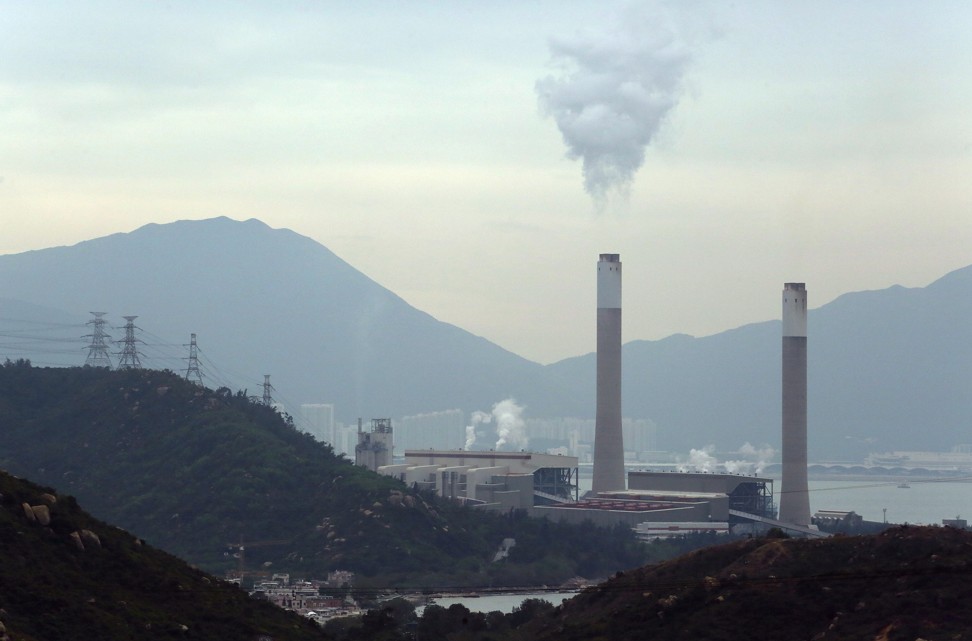
Here’s why mobile apps, big data and drones matter to Hong Kong’s century-old utility
CLP Holdings, the dominant electricity supplier to Hong Kong since 1901, said it’s scouting for new technologies from interactive consumer mobile apps to infrastructure operating data analytic tools to drones for inspecting power lines and cleaning solar panels.
The adoption of new technology is key to CLP’s effort to cut costs, enhance efficiency and meet its environmental commitments, said its chief executive officer Richard Lancaster, even as the company clinched a deal with Hong Kong’s government to maintain its role as the sole electricity supplier on its assigned territories for a longer-than-expected 15 years.

Unlike finance or retailing, utilities such as CLP have been largely buffered from disruptive technology because they operate as regulated sole suppliers with steady profitability and few competitors or need for innovation.
“The technology we use in our industry is still pretty much the same as when we got off the ground in the 1870s,” Lancaster said. “But by embracing technology, it gives us the tools to maintain our high level of supply reliability, keep costs low and meet environmental protection obligations.”

CLP’s power producing unit and Hongkong Electric, the city’s two power suppliers, are allowed to earn up to 8 per cent returns on their net fixed assets starting October 1 next year through the end of 2033, according to their April deal with the government. Though the returns had been reduced from 9.99 per cent, that still compares very favourably with other markets.
Still, CLP and Hongkong Electric must operate under more stringent metrics to ensure reliable power supply, introduce programmes for customers to cut peak power usage and save energy. They also have to encourage the use of renewable energy, including the commitment to buy electricity from private solar panels.
All of these require investments on software, hardware and new talent.

When combined with mobile apps that customers can install on smartphones, they can get timely access to data on their historical and projected power consumption. This allows them to better manage usage, such as cutting appliances at peak times when tariffs will be steeper.
The need to build more power plants is reduced by smoothing out peak demand, especially during the Hong Kong’s summer months.
This also eases the pressure to raise power tariffs even as more expensive natural gas will increasingly replace coal as power plants’ fuel in Hong Kong to reduce carbon emission, since utilities’ returns and tariffs are linked to their operating assets.
CLP also plans to adopt digital tools to collect data on its power plants, transmission and distribution infrastructure, so that it can better manage production, dispatch and schedule maintenance to reduce costs.
It is also conducting trials to use drones to replace helicopters for cheaper and more frequent inspection of power lines in Hong Kong to identify the need for repairs, and to blow dust off solar panels instead of washing it off in India where water shortage is a problem.
In Australia and India, it’s looking to install batteries that would store renewable energy produced in excess of demand, and draw down the energy when output could not meet consumption.
Such technology and products, while proven, is still too expensive and needs bigger production volumes to be economic, although Lancaster said battery technology is “at an early turning point” for commercial deployment.
“We are going through a fundamental change in the way we produce electricity, manage our electricity networks, and interface with our customers,” he said. Digitalisation “is just getting off the ground in the energy industry,” he said.
To help drive operational transformation brought by technology and instil a culture of embracing change, CLP appointed Austin Bryan as its new head of innovation, an American executive who led various technology-driven new business initiatives at firms in the finance, telecommunications and digital media industries in Australia and Europe.
CLP has also recently recruited a head of big data, an executive from Spain which has many wind farms.

